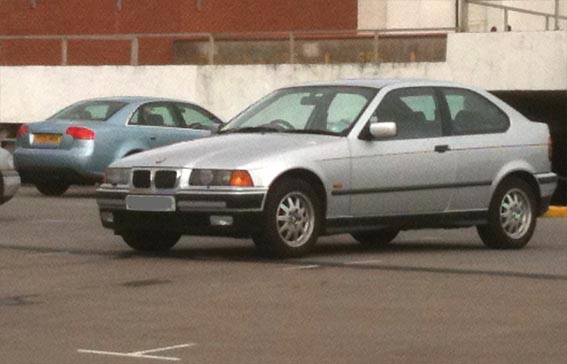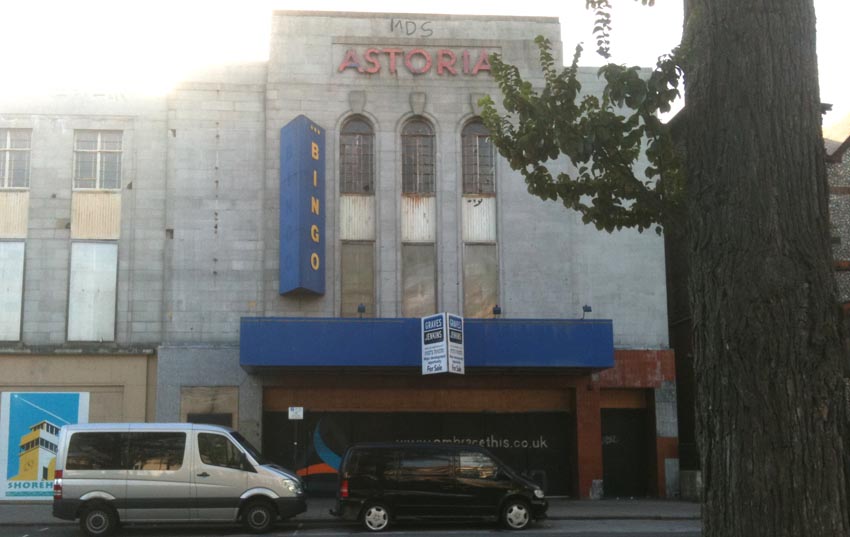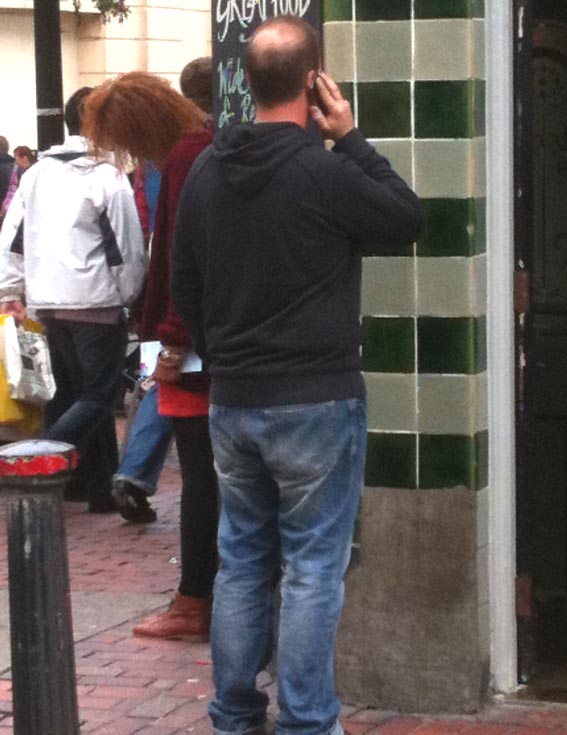
“Blending secret missions and high adrenalin, you will be in an interactive heist movie playing the lead role. It takes part in the streets of Brighton and is played through your mobile phone and your mind!” Blast Theory
A heist is taking place and you are implicated.
Outside the disused theatre, boarded-up, you wait. Glancing around you notice fast walking shoppers and a few metres to your left, clasping bottles, a group of red-faced men roll around on the pavement. The mobile rings, it is a recorded message from Machine to See With and warning that you are responsible for your own actions, legal or illegal (?). The voice informs you that you are being watched, that cameras are trained and following your every move. With the phone pinned to your ear you are given directions to walk, first right, then through a passageway, down streets, across roads. Now locked inside a toilet cubicle, the recorded voice at the end of the phone conducts a psychometric test.

Your answers will have a bearing on your role in the heist. You hide money about your person. You can hear those oblivious to your mission, queuing outside the door. Now you are set apart from the world around you, trying to act normal. It begins. On the top floor of the multistory car park, you look down to the city below and skulk between parked cars. You are looking for a registration number, a BMW. You are supposed to get into the car. Alarm bells are ringing. Are you on CCTV? It’s not your car, what’s/who’s inside? What’s going to happen next? Is this safe??? You circle around the edge of the car park discreetly watching the car and thinking, if I get in the car others will see me? Minutes pass. A man in a black jacket walks swiftly towards the car. He opens the driver’s door and gets in. You press ‘1’ on your phone to indicate that this has occurred. Walking towards the car you make the decision and get into the passenger seat. Glancing towards the driver you say ‘hello’. Phones ring. You are told that you and the driver are partners in the heist. Your partner tells you his plan. He seems to have it all worked out. Should you go along with his plan? Offer other suggestions? There is no time for this because you now you must run down to the fourth floor and look over the parapet. Your partner emerges on the street. You can see the entrance to the bank and your partner has disappeared. Later – you are now running away from your partner, he must not see where you have gone, you must make your way to the next location. Later – with the sense that the end is in sight, you are standing outside of the amusement arcade clutching the money and deciding which person to give it to…

Blast Theory’s Locative Narrative, A Machine to See With places you as a lead character in classic film heist. Popular culture so steeped in the conventions of the genre, make a prescribed back-story unnecessary. It is assumed that the participant will draw upon their ‘storehouse’ of scenarios, prompted by the familiar signifiers of the mastermind masked behind recorded messages, the division between the state and the underworld, the public and the agent and the dual identity of the streets.
Blast Theory’s Machine to See With A Machine To See With has a maximum number of six participants beginning every fifteen minutes at individual places in the city. A recorded message gives directions towards a number of key locations, at which participants arrive at staggered times. The drama is structured as a series participant/location specific nodes and core nodes. At particular times it appears that a participant’s actions cause a particular character role and subsequent story trajectory to come into effect, for example, by selecting an appropriate number on their mobile to indicate if they have got into the driver’s seat, the passenger seat or not got into the car. The short psychometric test is apparently used to identify your personality type and your subsequent role in the heist. The experience is that of an emergent narrative, partially determined by role-playing and following instructions and partially, it seems, based on chance, which participant arrives at a location at the same time as another.
Interaction occurs by pressing buttons on the mobile to indicate when an action has happened, or when another participant is present, walking/acting in the location and potentially conferring with others. Some participants are also asked to devise plans, coming up with an escape route or deciding on what to ‘steal’ from the bank.
-

Photo E. Whittaker: Participant, Blast Theory’s ‘Machine to See With’, Brighton
Immersion in the experience is predominately dependent upon the participant’s willingness to role-play. The use of the mobile phone is successfully integrated into the experience as a legitimate ‘prop’ of a character involved in a heist. Unlike many locative narrative experiences, the presence of the devise is not incongruous within the story-world nor does usability break the suspension of disbelief. The ability to replay the last message by dialing the number is an important feature especially as the spoken instructions are the only method of navigating through the city and the story.
In an informal debrief with participants Phil and Becky, the overall impressions Machine to See With was of an engaging and immersive experience peppered with real tension. When the rules of everyday behaviour were challenged, receiving secret messages in a toilet cubicle, hiding in a car park and getting into an unknown car, greater immersion in both the role-playing and story was evoked. The duration of Machine to See With was approximately an hour. It was generally felt that it could have been extended and that the ending came too soon (with possibly an anticlimax). There were a number of elements that did not seem to develop on this particular occasion, for example, the escape plans were not used or mentioned again. Further connections between the participants would have added another dimension to the experience.
A participant that had taken part on a different day reported that the experience was marred by the fact that their starting time occurred after the bank to be robbed had closed and this rendered some of the story impossible.